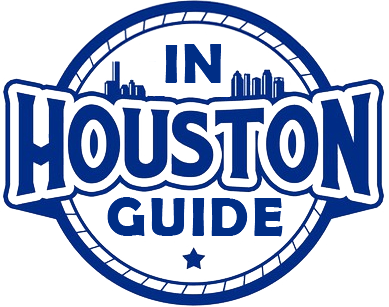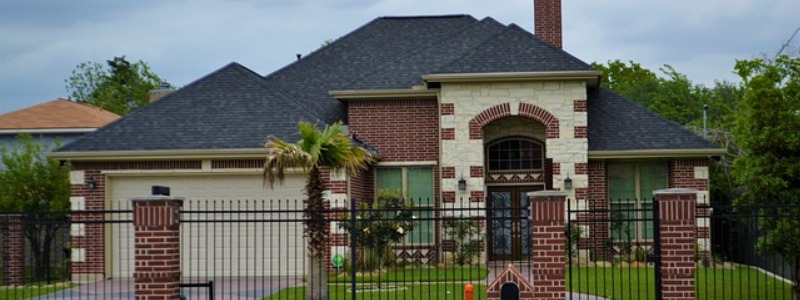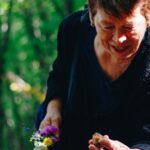Guide to Houston Neighborhoods
Contents
Choose from a wealth of living options in every style, location, and price range. When you call Houston home, you’ll discover many housing choices—from gated master-planned communities to near-town bungalows, family-friendly suburban neighborhoods to trendy downtown lofts, and rent or lease options large and small. You’ll find what you’re looking for, no matter your style or taste. Houston’s oldest neighborhoods lie near the central business district downtown.
These include the Heights, where distinctively updated turn-of-the-century homes stand next to newly constructed Victorian- and Charleston-style cottages with all the modern conveniences.
Montrose, an eclectic mix of homes, townhomes, and restaurants, is nestled near the Museum District. In MacGregor–Riverside, just east of the Texas Medical Center near Brays Bayou, old homes are being refurbished, and new construction is taking place.
The historic Fifth Ward north of downtown is revitalized.
The Greater Third Ward is home to such Houston landmarks as Texas Southern University and the University of Houston.
The Second Ward and Magnolia Park areas on the east end are two of the city’s oldest Hispanic neighborhoods. In Midtown, apartments, bungalows, and townhomes are within easy reach of some of the city’s finest antique dealers, art galleries, and interior design boutiques.
River Oaks, one of the oldest and most exclusive neighborhoods, sports white-columned mansions dating from the 1920s and Houston’s oldest country club. West University Place, a “small-town” cottage neighborhood in the shadow of Rice University and the Texas Medical Center, is one of several incorporated cities within Houston’s borders.
South Side Place, situated along a portion of West University Place, is only one block wide and nine blocks long. Bellaire, its city within the city and one of Houston’s first suburbs, is home to a varied mix of residences of all sizes.
Braeswood and Stella Link, perched along and adjacent to the banks of Brays Bayou, have easy access to the Texas Medical Center and the Reliant Park complex.
Westward outside 610 Loop, one of two major freeways that circle the city, neighborhoods take on personalities.
To the north, vibrant communities include Acres Homes, Aldine, Garden Oaks–Oak Forest, Greater Greenspoint, and Inwood Forest. To the west, Galleria–Uptown Park reflects the excitement of Houston’s Galleria and Post Oak shopping hub and features soaring high-rises with magnificent city views.
Memorial–Spring Branch features large tree-covered lots and ranch-style homes mixed with modern new construction, both north and South of Interstate 10.
Tanglewood remains one of Houston’s most exclusive and desirable close-in neighborhoods, with the Houston Country Club nearby.
The Memorial Villages, a collection of some of Houston’s toniest addresses, include the incorporated municipalities of Piney Point Village, Bunker Hill Village, Hedwig Village, Hunters Creek Village, Spring Valley Village, and Hilshire Village—each with its share of some of Houston’s most notable residents.
Briargrove Park, just inside Beltway 8, is a picturesque, family-friendly neighborhood on the west. Further west, beyond Beltway 8 (the Sam Houston Tollway), more areas and communities stretch from the northwest to the southwest.
The West Memorial area follows Memorial Drive past Wilcrest Drive and offers secluded, near-bayou living on tree-covered lots not far from Lakeside Country Club. Walnut Bend (walnutbend.org) is a quiet, tucked-away community bordering Beltway 8 to the east and Westheimer Road to the South.
Royal Oaks is a gated community of luxury homes surrounding its private country club (royaloakscc.com). And the Lakes of Bella Terra offer resort-style living just thirty minutes from downtown Houston.
As one continues west along Interstate 10, the city of Katy offers the charm of a small town and the quality of life of a burgeoning suburb.
Cinco Ranch provides exceptional master-planned community living on a grand scale. And the town of Fulshear is home to dynamic new developments for those who like the feel of country living with easy access to big-city amenities.
Other communities in far west Houston include Firethorne, Grayson Lakes (graysonlakes.com), the Lakes on Eldridge, Seven Meadows, and Weston Lakes.
Downtown Houston Districts
Nearly 400,000 people live within a five-mile radius of downtown Houston, the city’s urban core. It’s also the center of the city’s highway system, bordered by Interstate 45 to the South and west, U.S. 59 to the east, and Buffalo Bayou to the north. For more information, visit downtownhouston.org and downtowndistrict.org.
Ballpark District
Minute Maid Park, the Houston Astros’ home, anchors this downtown Houston section. The state-of-the-art, retractable roof stadium is housed in a former train station. It sits amid several modern lofts and office buildings, as well as an array of excellent restaurants like Irma’s, one of Houston’s Tex-Mex staples.
Civic Center
The Civic Center District has been the hub of the Houston city government since 1939. It’s home to City Hall, Hermann Square Park, and the historic Central Library, which underwent an extensive renovation in 2008. Hermann Square is frequently used for concerts, festivals, and other events.
For a dose of Houston history, visit the Texas room at the Julia Ideson library.
Convention District
Houston’s 1.8 million-square-foot George R. Brown Convention Center—the GRB, as locals know it—hosts hundreds of thousands of visitors annually. An extensive makeover brings several new restaurants, a 1,000-room Marriott hotel, and a grand pedestrian promenade connecting the GRB with Discovery Green Park. Rockets games at Toyota Center, shopping at Houston Pavilions, and easy access to the METRORail make the Convention District desirable to locals and visitors alike.
Harris District
It’s fitting for the most populous county in Texas—with more than four million residents—to have a namesake district that’s home to the core of its government. Here, you’ll find the Harris County courts complex and the center of the Harris County government.
Historic District
Centuries-old architecture and tree-lined streets with shops, cafes, pubs, and lofts provide a unique mix of old and new. Market Square Park, the site of Houston’s original city hall, and the University of Houston’s downtown campus keep this area bustling day and night.
Medical District
The southern quadrant of downtown Houston is home to St. Joseph Medical Center and the Sacred Heart Co-Cathedral campus, which serves as a religious and civic center.
Shopping District
Houston has long been known as a shopping oasis. GreenStreet and The Shops at Houston Center’s vast retail, dining, and entertainment options, including Houston’s House of Blues, don’t disappoint. The area is easily accessible via the Main Street Square stop on the METRORail.
Skyline District
The hub of downtown Houston’s workforce, 10 of Houston’s 26 Fortune 500 companies call the Skyline District home. An extensive network of climate-controlled underground tunnels connects the vast skyscrapers. The JP Morgan Chase Tower is the tallest building west of the Mississippi, standing 75 stories tall.
Theater District
Have a penchant for the performing arts? You’ll feel right at home in the Theater District. Houston is one of few U.S. cities with permanent resident companies in opera, ballet, music, and theater. The 17-block area includes nine world-class performing arts venues, Bayou Place, and the Houston Aquarium.
Warehouse District
The Warehouse District is famous for its funky alternative art scene. Artists, architects, and photographers call this area home, where you’ll find hip dining options, live music, art studios, lofts, and more.
Northeast Houston
Northeast Houston comprises a mix of communities: Atascocita, Eagle Springs, Fall Creek, Humble, Kingwood, Summerwood, and Walden on Lake Houston. Located within about a 10-mile radius from where U.S. 59 and F.M. 1960 intersect, these seven communities share abundant natural beauty. Residents take advantage of the fishing and boating opportunities that Lake Houston and the San Jacinto River create. These amenities attract many buyers. Proximity to downtown and George Bush Intercontinental Airport (IAH) contributes to the area’s attractiveness.
Atascocita
On the shores of Lake Houston, Atascocita encompasses more than 15 subdivisions and has become one of the fastest-growing residential communities in the nation. Formed by the damming of the San Jacinto River, Lake Houston offers excellent opportunities for swimming, fishing, boating, and skiing. With access to numerous public boat ramps, fishing enthusiasts are drawn to more than a dozen varieties of fish found in the lake ( www.humbleareachamber.org ).
Eagle Springs
Eagle Springs residents easily access U.S. 59 and Beltway 8, just minutes from Lake Houston and IAH. Amenities in the community include a 15-acre community sports park, a swim complex, a central nature park, a series of lakes, hike-and-bike trails, and a village square.
Fall Creek
Located near major employment venues, including the east energy corridor, Greenspoint, the Inner Loop, the medical center, and The Galleria, Fall Creek offers convenient, suburban living. Shopping, cultural, entertainment, and dining adventures abound, with many downtown and suburban attractions less than 25 minutes away. Quiet streets and carefully planned villages complement an aquatic center, trails, and greenbelts in a 1,261-acre community offering an abundance of recreational opportunities, including Redstone Golf Club – home to the Shell Houston Open PGA Tour Event ( www.fallcreekhouston.com ).
Humble
The City of Humble offers a small-town feel just 20 miles from downtown Houston. Located in the northeast quadrant of the Houston metropolitan area, the Greater Humble area includes Atascocita, the City of Humble, Kingwood, and Spring, all of which are currently experiencing population and economic growth. With the imminent completion of upgrading on U.S. 59, local development has been facilitated by the reasonable commute to the enormous job base in downtown Houston. Additionally, robust commercial growth in the area has created thousands of jobs locally. The highly acclaimed Humble Independent School District (ISD) serves the area ( www.humblearea.com ).
Kingwood
Conveniently located near Houston area businesses and recreational destinations, Kingwood consists of 26 villages with more than 63,000 residents. More than 75 miles of private greenbelt and hike-and-bike trails, 23 swimming pools, a private boat launch, equestrian centers, and more than 55 acres of private parks enhance this 14,000-acre community. METRO’s Park & Ride service provides transportation to downtown Houston, Greenway Plaza, and Greenspoint. Kingwood residents have easy access to IAH, and with the widening and completion of U.S. 59 to Humble, Kingwood Drive, Northpark Drive, and the newly completed Lake Houston Parkway, commuting has become even faster ( www.kingwoodonline.com ).
Summerwood
Located in Houston just off Beltway 8 near Humble, Summerwood encompasses 1,500 acres in a setting among lakes and tree-lined trails. Wired for the future, every home comes ready with a state-of-the-art, fiber-optic network. Other amenities include 17 acres of lakes, more than 150 acres of woodland and open spaces, nearby Lake Houston, and proximity to Deerbrook Mall as well as significant employment and business centers ( www.summerwoodonline.com ).
Walden on Lake Houston
Walden on Lake Houston is located on the shores of Lake Houston, just south of F.M. 1960. This growing 750-acre, master-planned community of 2,000 homes boasts 11 inland lakes, an 18-hole championship golf course, lighted tennis courts, an Olympic-size swimming pool, racquetball courts, and a clubhouse.
East Houston
East Houston lies northeast of downtown Houston between 610 Loop and Beltway 8. The area is home to the East Houston Regional Medical Center.
Eastex/Houston
Eastex/Jensen is a primarily low-income area north of downtown Houston, directly across 610 Loop.
Fifth Ward
North of downtown, the Fifth Ward has a rich musical, artistic, and cultural history and boasts six churches that are over 100 years old. The community’s Mount Vernon United Methodist Church was founded by former slave Rev. Toby Gregg in 1865. For more information, visit fifthwardcrc.org.
Kashmere Gardens
This historically African-American community borders an industrial zone and railroad corridor.
Northside Village
The Northside Village area, also known as Near Northside, has historically been home to a primarily Hispanic population. The community has recently been revitalized due to the area’s proximity to downtown, skyline views, easy access to the North Freeway, and the METRORail’s new red line.
Northshore/Cloverleaf
Northshore/Cloverleaf is located east of downtown Houston along Interstate 10, just outside 610 Loop. Galena Park ISD (galenaparkisd.com) serves Cloverleaf-area students.
Trinity/Houston Gardens
Trinity/Houston Gardens is a primarily African-American neighborhood located northeast of downtown Houston, just outside Beltway 8.
Northwest Houston
In northwest Houston, along the U.S. 290 and FM 1960 corridors, several compelling communities attract new families and young professionals who value the top-rated Cypress-Fairbanks (Cy-Fair) School District. The 11,400-acre Bridgeland community (bridgeland.com) embraces a lifestyle within a peaceful, natural setting. Coles Crossing is a master-planned community with 175 acres devoted to recreation. Jersey Village is an incorporated city in the area with a population of almost 200,000. The Champions– FM 1960 area has stylish neighborhoods, many tucked away and hidden among tall pine trees. Fairfield (visitfairfield.com) is a Friendswood Development Company neighborhood full of lakes, parks, pools, and greenbelts.
Other communities in the area include Gleannloch Farms, Northpointe, High Meadow Estates, Riata Ranch, Magnolia, the Spring-Klein area, WindRose, and the city of Tomball. In northeast Houston, seven dynamic communities share an abundance of natural beauty near Lake Houston and the highly acclaimed Humble Independent School District. Atascocita, Eagle Springs, Fall Creek, the city of Humble, Kingwood, Summerwood, and Walden On Lake Houston.
The Northwest section of Houston is a high-growth area. The completion of Beltway 8, the upgrading of Texas 6 and F.M. 1960, and improvements to U.S. 290 have enhanced accessibility to the region. Area neighborhoods are attractive to employees working on Houston’s west side.
Bear Creek/Texas 6
Bear Creek and the Texas 6 area have experienced significant residential development as well as central office and industrial activity. The area between the Katy Freeway and U.S. 290 is referred to as Bear Creek and is one of the three distinct areas that make up Houston’s northwest sector. Master-planned communities in Bear Creek include Fairfield and Deerfield Village, and other subdivisions include Glencairn, Bear Creek Plantation, and Pine Forest.
Coles Crossing
Located at U.S. 290 and Barker-Cypress, Coles Crossing is close to work, shopping, and top-rated Cypress-Fairbanks (Cy-Fair) schools. The 1,200-acre master-planned community has 175 acres devoted to recreation (www.colescrossing.com).
Cypress
Cypress is located northwest of Houston, 21 miles from Houston’s Central Business District, and Jersey Village is an incorporated city located within the area. More than 200,000 people in 68,000 households have been attracted to the Cypress area, which includes approximately 186 square miles within the highly-ranked Cy-Fair ISD. In addition to being within a reasonable commute of the enormous job base in Houston, much of the land is reasonably priced. Willowbrook Mall is nearby (www.cyfairchamber.com).
Champions/F.M. 1960
The Champions/F.M. 1960 area is close to The Woodlands, Willowbrook, Greenspoint malls, golf courses, and country clubs such as Champions Golf Club, Sam Houston Race Park, and the Aerodrome Ice Skating Complex. IAH, Highway 249, and Beltway 8 have sparked growth in the area.
Fairfield
Friendswood Development Company recently added another 1,000 acres to the 3,200-acre community of Fairfield. When complete by 2011, Fairfield will be home to 6,500 families. The area’s 13,400-square-foot athletic club includes a full-size basketball court, fitness room, special events room, locker rooms, and classroom areas. Outside the center are a competition-size swimming pool, tennis courts, and a 20-acre sports park with baseball and soccer fields. Fairfield has six lakes, five neighborhood parks, five neighborhood pools, and numerous pocket parks and greenbelts winding through the community. Fairfield is located in the highly acclaimed Cy-Fair ISD ( www.visitfairfield.com ).
Gleannloch Farms
Founded in the 1950s as a source for Egyptian Arabian horses, Gleannloch Farms today is known for paths, parks, ponds, a lakeside eight-acre recreation center, a 27-hole golf course, and an equestrian center providing myriad family activities. The immediate area also boasts a burgeoning technology corridor, the F.M. 1960 shopping district, the large regional Willowbrook Mall only minutes away, and important venues for the arts ( www.gleannlochfarms.com ).
High Meadow Ranch
Located off Texas 249, High Meadow Ranch is a master-planned community offering a championship golf course, a junior Olympic-size swimming pool, horseback riding, a fishing lake, and nature trails. Homesites range from one to 10 acres ( www.highmeadowranch.com ).
Magnolia
Magnolia is situated 20 miles southwest of Conroe in southwestern Montgomery County, at the junction of F.M. 1774 and F.M. 1488. The Greater Magnolia area, experiencing a high growth rate, spans roughly 12 miles in all directions, encompassing a population of more than 65,000 ( http://ci.magnolia.tx.us ).
Northpointe
Located off Texas 249 outside F.M. 1960, Northpointe is a heavily wooded community with lakes, recreational facilities, and fiber-optic capabilities. The Villages of Northpointe are close to Willowbrook Mall.
Riata Ranch
Riata Ranch, located south of U.S. 290 on Barker-Cypress Road, is a family-oriented community in northwest Houston. Residents enjoy 18-plus acres of parks, a recreation center with a swimming pool and children’s pool, lighted tennis courts, and a unique, figure-eight tricycle park and playground for toddlers.
Spring/F.M. 1960/Klein
The Spring/F.M. 1960/Klein area offers a suburban quality of life for those who want to live near the city but long for a hometown feel. Housing options vary from one-story, ranch-style homes to large two-story colonials. The area has several townhomes and apartment communities. Spring residents draw from employment centers, including IAH, The Woodlands, and downtown Houston. It is home to Old Town Spring, a quaint turn-of-the-century shopping town composed of more than 150 shops, restaurants, museums, and art galleries. The highly ranked Klein ISD serves the area ( www.oldtownspringtx.com ).
Tomball
The Tomball area, just north of F.M. 1960, is known for its open rural territory and abundant forested land. The availability of ample scenic land at reasonable prices has been a decisive factor in attracting homebuyers. Local growth also has been facilitated by the reasonable commute via Texas 249 to the job base in Houston ( www.tomballtexas.com ).
WindRose
WindRose, a heavily forested 1,121-acre community southwest of Spring off Interstate 45 North, will have about 2,000 homes upon completion. The master plan includes a championship 18-hole golf course, green space, and parks. Offered in a variety of price ranges, homes feature amenities, including a junior Olympic-size pool, tennis courts, a meeting house, a volleyball court, a soccer field, and parks ( www.visitwindrose.com ).
Garden Oaks/Oak Forest
Known for pine trees, grand magnolias, and large lots, the Garden Oaks community is an architecturally unique area featuring quaint cottages, charming bungalows, plantation, ranch, and traditional–style homes. Oak Forest is a more affordable option, offering almost everything you can find in Garden Oaks but at a slightly lower price point. For more information, visit gardenoaks.org.
Greater Inwood
The Greater Inwood area is accessible via the North 610 Loop, Interstate 45, State Highway 290, and the North Freeway. Many of the area’s original homes were built for oil company executives, and many new homes now occupy land that once served as hunting grounds for Native Americans. Entry-level homes and new apartment complexes make the area attractive for first-time homebuyers and renters. Aldine ISD (aldine.k12.tx.us) serves students in this area. For more information, visit greaterinwood.com.
Heights/Timber Grove
The Heights is Houston’s oldest planned community, located northwest of downtown. The area is known for its diverse population and small-town quality of life while still being in the city’s heart. Tastefully updated turn-of-the-century homes stand next to newly constructed Victorian– and Charleston–style cottages with large, wrap-around porches. Numerous high-rise condos are currently being developed in response to the predicted population growth for the area. House hunters are drawn to the 19th Street Historic Business district, which offers a unique variety of specialty boutiques, antique shops, and funky eateries. The First Saturday Arts Market features live music, crafts, art, and more. For more information, visit houstonheights.org.
North Houston District
The North Houston District, a 12-square-mile activity center at Interstate 45 and North Sam Houston Parkway, is home to 20 million square feet of office, retail, and industrial space, 72,000 employees, and approximately 112,000 residents. Two school districts serve the area: Aldine ISD (aldineisd.org) and Spring ISD (springisd.org). For more information, visit northhouston.org.
Northline
This historically Hispanic community lies north of downtown Houston across 610 Loop.
Northside/Acres Homes
Northside/Acres Homes is a predominantly African-American community that got its name when
World War I–era landowners sold home sites divided by the acre, not the plot. Aldine ISD (aldineisd.org) serves the western part of Acres Homes.
Spring Branch East & West
Spring Branch East is primarily a blue-collar area with bungalows, and Spring Branch West is home to 1960s ranch-style homes. Several parks and a golf course allow access to a swimming pool, tennis courts, a community center, an outdoor basketball pavilion, playgrounds, and a hike-and-bike trail. Spring Branch ISD (cms.springbranchisd.com) serves students here.
Southeast Houston
Eado/ East End
East Downtown—or EaDo, as locals call it—is budding with a diverse mix of restaurants, bars, art galleries, and ethnic grocery marts. The area’s proximity to the heart of downtown Houston, the Texas Medical Center, and the Houston Ship Channel continue to attract new residents. Discovery Green, Minute Maid Park, Toyota Center, and the Houston Dynamo’s BBVA Compass Stadium add to the area’s walkable entertainment options. A new METRORail line is in the works to
improve connectivity. For more information, visit eadohouston.com.
Galena Park
Galena Park is located on the north bank of the Houston Ship Channel just east of the Houston city limits. With a population of 10,592, the city is home to an Olympic-size swimming pool, two
recreational facilities, a public library, and numerous parks. Galena Park ISD (galenaparkisd.com) serves students here. For more information, visit cityofgalenapark-tx.gov.
Pasadena
The keys to Pasadena’s economy are closely linked to the city’s proximity to the Houston Ship Channel, NASA’s Johnson Space Center, and the Bayport Industrial District. Pasadena is home to
several museums, the Pasadena Philharmonic, a community theater, and a famous Strawberry Festival. The city and its old honky-tonk, Gilley’s, were prominent in Urban Cowboy. Pasadena ISD (pasadenaisd.org) serves students here. For more information, visit ci.pasadena.tx.us.
Sunnyside
The Sunnyside area is located south of downtown Houston, outside 610 Loop and inside Beltway 8, off State Highway 288. The site is predominantly African-American, with suburban-style housing.
Third Ward/Hobby Airport
The Third Ward, home to Texas Southern University and the University of Houston, is rich in culture and history. The Third Ward is adjacent to Hobby Airport, southeast of downtown, and east of the Texas Medical Center.
Southwest Houston
One of the most expansive areas in Houston is the southwest region – encompassing parts of Harris County and Fort Bend County.
Fondren Southwest
With more than 41,000 residents, Fondren Southwest is a microcosm of the Greater Houston community – a mixture of multi-family dwellings and residential subdivisions. Its easy access to the medical center, downtown, the Beltway, Southwest Freeway, and Braeswood has helped to contribute to the area’s steady growth during the past few years ( www.gs-whcc.org ).
Gulfton
Many different nationalities live in the Gulfton area, north of Bellaire. Most 46,000 residents live in apartment homes, although the number of single-family homes is growing. Gulfton also is home to Benavidez Community Garden, the most extensive urban harvest garden in Houston. Westpark, bordering the Gulfton area, recently opened and is now a major east-west toll road attracting businesses ( www.gswhcc.org ).
Meyerland/South Post Oak
Located just south of Bellaire, the combined Meyerland/South Post Oak community boasts excellent accessibility, beautiful parks, and severe deed restrictions. While some homes are original 1950s bungalows, others are new construction. The southwest Houston neighborhood is served by three synagogues and the Jewish Community Center ( www.gs-whcc.org/meyerland.asp ).
Sharpstown is a predominantly middle-class community with good freeway access, more than 7,000 homes, and vast diversity. The area is noted for its winding streets, large yards, and quiet neighborhoods ( www.gswhcc.org/sharpstown.asp ).
Westbury
Westbury is a vibrant and active middle-class community with more than 39,000 residents. Accessibility is a big key to the success of Westbury, and the medical center, downtown Houston and Reliant Park are within easy reach. At least another 7 percent growth in population is projected over the next few years ( www.gswhcc.org/westbury.asp ).
Bellaire
Bellaire is one of the city’s original suburbs. Encompassed by Houston and West University Place, Bellaire is known for its quiet neighborhoods and highly-ranked schools. Bellaire Zindler Park features a neighborhood pool, tennis courts, a children’s playground, the Bellaire Recreation Center, and the Bellaire Civic Center. Nearby, Meyerland is the center of Houston’s Jewish community. For more information, visit bellairetx.gov and ci.bellaire.tx.us.
Braeburn
The Braeburn area features tree-lined streets dotted with mid-century modern homes. The community sits along Brays Bayou, offering easy access to more than 15 miles of hike-and-bike trails, The Galleria, the Texas Medical Center, NRG Stadium, U.S. 59, 610 Loop, and Beltway 8. Westbury, Willow Meadows-Willowbend, and Southwest Houston lie near Braeburn and the Brays Oaks district.
Brays Oaks/Greater Fondren
Brays Oaks residents enjoy easy access to downtown Houston and concerts and events at the nearby Levitt Pavilion. The area covers roughly 10 miles with an estimated population of 60,100, and much of the district includes the Greater Fondren Southwest community, which is home to many apartment complexes. For more information, visit braysoaksmd.org.
Chinatown
Houston is home to the largest Asian population in the southern United States. The city’s original Chinatown, located just east of downtown, relocated in the early 1990s to the city’s southwest area. Today, Chinese shopping centers like Hong Kong City Mall, restaurants, bakeries, and more sit alongside markets dedicated to Indian, Pakistani, and Middle Eastern wares. The area is complete with street signs featuring Chinese characters.
Galleria/Uptown
Situated along Westheimer Road and Post Oak Boulevard, the Uptown area exudes urban sophistication, style, and cosmopolitan energy. Centrally located in the city’s Uptown district, The
Galleria comprises hundreds of upscale restaurants, retailers, and hotels, as well as soaring high-rises that exceed 200,000 working professionals and visitors daily. The community features trendy shopping centers and upscale high-fashion boutiques. Turn to p. 80 to learn more
about shopping in Houston; Uptown is also home to many of the city’s largest hotels and boasts an array of housing options. For more information, visit uptown-houston.com.
Gulton
Located approximately 10 miles southwest of downtown Houston, Gulfton is about two miles west of Bellaire between Beltway 8 and the 610 Loop, southeast of U.S. 59, and north of Bellaire Boulevard. Gulfton is a densely populated area with few sidewalks.
Hedwig Village
Hedwig Village is located west of downtown Houston adjacent to the Katy Freeway. The area primarily features ranch–style homes, and residents enjoy easy access to Hedwig Park and the
Spring Branch Memorial Library. Spring Branch ISD (cms.springbranchisd.com) serves students in Hedwig Village. For more information, visit thecityofhedwigvillage.com.
Medical Center/NRG Stadium
Houston has long been known for its burgeoning energy and aerospace industries, but it’s also home to the world’s largest concentration of researchers, physicians, and medical professionals. In addition to world-class medical facilities, the Texas Medical Center—which treats more than five
million patients annually and employs more than 70,000 people—is comprised of educational icons like the University of Texas M.D. Anderson Cancer Center, St. Luke’s Episcopal Hospital, Memorial Hermann Hospital, and the Baylor College of Medicine. Nearby NRG Stadium hosts various events throughout the year, including Houston Texans football games and the Houston Livestock Show & Rodeo.
Memorial Park-Washington Corridor
Memorial is an affluent area along Buffalo Bayou on the 610 Loop west of downtown. The site is home to Memorial Park, one of the largest urban parks in the United States. It’s famous for golf, running, and cycling and reports nearly three million annual visitors. Popular attractions include the Houston Arboretum & Nature Center, Memorial City Mall, and Town & Country Village. A strip of popular restaurants, lounges, wine bars, and townhouses recently replaced a stretch of dilapidated properties. The Wave taxi bus offers a fixed-route, fixed-rate shuttle within the Washington Avenue District, Midtown, and the Heights.
Midtown
Sandwiched between downtown and the Museum District, the trendy Midtown neighborhood is popular with young and middle-aged professionals. Midtown is one of the city’s most pedestrian-friendly neighborhoods—it’s packed with high-rise apartments, boutique shopping, art galleries, restaurants, and nightlife. Situated directly between downtown and the Texas Medical Center with three dedicated METRORail stations, the location is a big attraction for prospective Midtown residents. For more information, visit houstonmidtown.com.
Montrose
Established in 1911, Montrose is one of Houston’s most diverse areas. It’s home to music venues, vintage shopping, and historic residential architecture. South Montrose is nestled near the Museum District, which encompasses more than 50 cultural institutions, museums, and art galleries. The American Planning Association named Montrose one of the United States 10 great neighborhoods.
Museum District
Culture runs deep in Houston’s Museum District, which welcomes nearly nine million visitors annually. The area is home to 18 museums within a 1.5-mile radius of the Mecom Fountain, including the Museum of Fine Arts, Rice University Art Gallery, the Houston Museum of Natural Science, the Houston Children’s Museum, and more.
River Oaks
River Oaks is well known as one of Houston’s oldest and most affluent neighborhoods. Located just three miles west of downtown in the Inner Loop, the area sports white-columned mansions dating from the 1920s and Houston’s oldest country club. High architectural standards and comprehensive building restrictions protect the community. The median home value in River Oaks is over $1 million. For more information, visit riveroaksdistrict.com.
Sharpstown is a master-planned community southwest of downtown Houston. The area features post-World War II bungalows and modern and traditional homes on large lots. The
area’s civic association estimates that more than 60 dialects are spoken here. Residents enjoy access to Sharpstown Green Park, a community center, and the Sharpstown Golf Course. For more information, visit sharpstowncivic.org.
South Main/Central Southwest
Central Southwest Houston is a predominantly African-American neighborhood that offers easy access to The Galleria and Texas Medical Center. Homes and apartments tend to be affordable. High-end shopping and fine dining have yet to move into the area, but it’s home to many authentic ethnic restaurants.
Upper Kirby/Greenway Plaza
Upper Kirby is a network of historic neighborhoods that are intermingling with redevelopment. The area is just minutes from Greenway Plaza, downtown, The Galleria, and Texas Medical Center, offering residents easy access to the places they live, work, and play. West Ave is home to an assortment of top-notch restaurants, art galleries, and trendy boutiques. For more information, visit upperkirbydistrict.org.
West University/Rice Village
The third-most expensive neighborhood in Houston, the tree-lined West University area— West U, as locals call it—is a community of upper-middle-class families. On every block, you’ll find an abundance of upscale housing options, including unique bungalows and newly remodeled homes. Home to Rice University and Rice Village Shopping Center, the neighborhood appeals to families and young professionals alike. Morningside Boulevard offers a good mix of lunch, dinner, and happy hour spots. For more information, visit westutx.gov.
Woodlake/Briarwood
Woodlake/Briar Meadow is a vibrant and diverse community located approximately 12 miles southwest of downtown Houston, just west of The Galleria. Its location allows for lots of options when it comes to shopping, dining, and nightlife. Proximity to Memorial Park allows easy access to hike-and-bike trails. For more information, visit briarmeadow.org.
Fort Bend County
Fort Bend County is home to more master-planned communities than any other county in the state. The total designed development population for these 32 planned communities is almost 370,000. Fort Bend County has experienced a new home sales surge in the past few years fueled by low mortgage rates and strong job growth. The population of Fort Bend County is expected to increase from 380,200 to 447,457 persons by 2007.
Alief
A culturally diverse area in southwest Houston, Alief offers a variety of homes, restaurants, and shopping opportunities. Alief ISD is one of the state’s fast-growth districts, serving more than 45,000 students who cumulatively speak 59 languages ( www.alief.com ).
First Colony
A 9,700-acre community, First Colony boasts a golf course and indoor/outdoor tennis courts at Sweetwater Country Club, plus ice skating at the Aerodome, the home training facility for the Houston Aeros professional hockey team. Other amenities include year-round swimming at the 50-meter, heated aquatics pool, more than 23 athletic fields, 14 neighborhood parks, and 89 acres of lakes ( www.firstcolonytexas.com ).
Greatwood
Hundred-year-old trees flourish among more than 3,000 homes in a small-town atmosphere. Greatwood offers a championship golf course, more than 32 lakes, a trail system, three recreation complexes, and a four-acre nature park ( www.greatwoodonline.com ).
Lake Olympia
Located off Texas 6 near Missouri City, Lake Olympia has miles of greenbelt trails, 130 acres of natural lakes, nature, and wildlife reserves, parks, and a marina. The Fort Bend ISD serves the community.
Missouri City
Missouri City residents enjoy urban amenities in a small-town atmosphere. With a population of almost 59,000, Missouri City is home to several award-winning master-planned communities and the highly acclaimed Fort Bend ISD. Missouri City also boasts one of the most extensive park systems in Fort Bend County ( www.ci.mocity.tx.us ).
New Territory
New Territory is a 2,300-acre master-planned community of 4,600 homes in one of the fastest-growing counties in the United States. Opportunities for both indoor and outdoor activities abound for New Territory residents and their guests. These include parks, playgrounds, swimming pools, baseball and softball fields, tennis courts and soccer fields, indoor and outdoor volleyball and basketball courts, and an indoor fitness center ( www.newterritory.org ).
Pecan Grove Plantation
This 1,400-acre country club community is built around a 27-hole golf course in the natural beauty of enormous oak and pecan trees. Pecan Grove offers its residents neighborhood parks, playing fields, jogging paths, swimming pools, tennis courts, a fitness center, and a private country club ( www.fortbendcounty.org/plan.html ).
Richmond
Located on a bend in the Brazos River, Richmond is the oldest city in
Fort Bend County, with a population of approximately 12,000 residents. Surrounded by many of Fort Bend County’s newest master-planned communities, Richmond is often the central meeting place for government business and a favorite site for the film industry to produce movies and commercials. Close to the state’s most visited park — Brazos Bend State Park and The George Observatory — the community supports its local parks and green belts for family recreation, bird watching, and camping ( www.roserichchamber.com ).
RiverPark
RiverPark, located near U.S. 59 and Grand Parkway, offers large homes on oversized lots. Consisting of 800 acres, this community has more than 160 acres of Brazos River frontage for parks.
Riverstone
This 3,700-acre planned community will contain 6,000 single-family homes, including 250 acres of lakes, and more than 500 acres devoted to open space, parklands, recreational facilities, and an 18-hole golf course. Currently, homes are available in seven neighborhoods ( www.rivestonecommunity.com ).
Rosenberg
The City of Rosenberg and its almost 26,500 residents are hosts to the Fort Bend County Fairgrounds and the Fort Bend Railroad Museum. Antique shops, museums, and restaurants have become the center of downtown trade. Nearby community parks include Brazos, Travis, and Seabourne Creek — adjacent to Rosenberg’s Convention and Civic Center. Rosenberg’s housing prices are lower than the Fort Bend County average ( www.ci.rosenberg.tx.us ).
Sienna Plantation
A master-planned community near Missouri City, Sienna Plantation features the largest private, resort-style water park in the South. The pool covers more than an acre and includes an eight-lane competition pool, multiple diving areas with three-board diving well, a water tower with more than 200 feet of slides, a zero-entry pool, and Sienna “waterworks.” Club Sienna also includes a half-acre children’s playground, a tennis center with eight lighted courts, and an outdoor amphitheater overlooking Waters Lake. There’s also a 7,500-square-foot southern plantation-style community center featuring two multipurpose meeting rooms, a fitness center, and a cabana ( www.siennaplantation.com ).
Stafford
The City of Stafford made national headlines when it eliminated its property tax in 1995 for residents and businesses. More than 15,000 residents live in the city, and more than 50,000 people come to work in Stafford each day. Residents enjoy 35 acres of green space dedicated as parkland throughout the city and five city parks, with another on the way. The parks feature playground equipment, picnic benches, jogging trails, and well-maintained fields for competitive sports ( www.cityofstafford.com ).
Sugar Land
Sugar Land is an economically strong and culturally diverse city of about 71,000 residents. According to the 2000 census, Sugar Land ranked first in growth in the Houston metro area and among the state’s 45 largest cities. Recreational opportunities include numerous parks, athletic complexes, hike-and-bike trails, greenbelts, aquatic centers, and three highly regarded golf courses ( www.ci.sugar-land.tx.us ).
South of Houston
Areas just south of Houston are among the fastest growing in the entire region, and newcomers can find various lifestyle options.
Alvin
The City of Alvin has more than 22,000 residents and has easy access to Houston, the Johnson Space Center, Gulf Coast petrochemical industries, and Galveston. Alvin is a city of trees, parks, and Victorian homes known for its hometown atmosphere and economically diverse population. Alvin ISD has a “Recognized” rating from the state for academic achievement (see chart on page XX). Attractions include Texas Thunder Speedway, Nolan Ryan Center Exhibit, and Bayou Wildlife Park ( www.alvintexas.org ).
Galveston
Many newcomers are surprised to learn that Galveston, a barrier island on the Texas Gulf Coast, is less than an hour’s drive from Houston. Galveston is home to many commuters who work in Houston. In addition, many Houstonians maintain property along the Gulf of Mexico in Galveston for their weekend getaways.
The diversity of housing options, from stately Victorian mansions and beachfront villas to bungalows and high-rises, adds to the city’s charm. With hundreds of structures on the National Register of Historic Places and thousands of historic houses, Galveston is one of the country’s most significant concentrations of late 19th- and early 20th-century architecture. From stately mansions to quaint cottages to the conversions of downtown buildings to residential lofts, Galveston’s older neighborhoods offer a wide range of housing options to fit any budget ( www.galveston.com ).
Pearland
Located in northern Brazoria County and southern Harris County, Pearland shares a boundary with the City of Houston and is about 10 miles from Hobby Airport. Residents enjoy big-city amenities with a country atmosphere. Pearland ISD has more than 14,000 students and an “Exemplary” district rating — the highest rating given by the state. Many well-maintained, economic, and conveniently located multi-family units serve the area and master-planned communities, such as Shadow Creek Ranch, a 3,300-acre, lake-themed community ( www.ci.pearland.tx.us ).
Silverlake
Silverlake, located at Texas 288 and F.M. 518, has a 29-acre lake, a surrounding park, and eight recreational facilities, including four tennis courts, walking trails, a junior Olympic-size swimming pool, and a community center. Served by Pearland ISD, the 1,700-acre community will have 4,000 homes upon completion and a championship golf course with a clubhouse.
Bay Area Houston
Halfway between Houston and Galveston, Bay Area Houston is the third-largest boating center in the United States and home to NASA’s Johnson Space Center (JSC). The nearly 200,000 residents of 11 separate municipalities and unincorporated areas enjoy a highly diversified, balanced economic structure with a strong base of aerospace, high-tech, petrochemical, commercial fishing, and marine/boating industries. Attractions such as Space Center Houston have promoted tremendous growth in tourism in recent years.
Originally dependent on fishing and agriculture, the area’s primary industry today is aerospace, focusing on JSC. Aerospace-related companies employ about 27 percent of the area’s residents. Boating, recreation, and tourism industries use an additional 25 percent. Neighborhoods and communities in Bay Area Houston include Clear Lake, Clear Lake Shores, El Lago, League City, Kemah, Nassau Bay, Seabrook, South Shore Harbor, Taylor Lake Village, Victory Lakes, and Webster ( www.clearlakearea.com ). Bay Area Houston entities include:
- Clear Lake, a unique master-planned community of about 57,100, has been annexed by the City of Houston. It is home to JSC and many JSC employees, including astronauts.
- Clear Lake Shores, a small island community, has about 1,200 residents.
- El Lago, located on Clear Lake, is home to about 3,100 residents.
- Kemah, a bayside community of about 2,400 residents, boasts the Kemah Boardwalk, which features amusement rides, waterfront dining, and quaint shops.
- League City, the largest city in the bay area, with a population of about 52,000, continues to experience robust growth.
- Nassau Bay, located directly across from JSC, is home to about 4,100 residents. Many residents live along the Clear Lake waterfront.
- Seabrook, one of the larger residential communities with an estimated 10,500 residents, features parks, marinas, fresh seafood markets, and restaurants along Clear Lake and Galveston Bay.
- South Shore Harbor, located on the south side of Clear Lake, features 800 single-family homes surrounding a 27-hole golf course, country club, and marina.
- Taylor Lake Village, with a population of about 3,600, is a quiet community that accesses Clear Lake.
- Victory Lakes, a master-planned community, features seven lakes, walking trails, a golf course, and a recreational center.
- Webster, the gateway to NASA and Bay Area Houston, has more than 9,100 residents.
Deer Park
Deer Park, a quiet community of about 28,000 residents, is located approximately 20 miles southeast of Houston. The area has a solid job base with 14 significant firms and several smaller light industrial companies. Quality schools, affordable houses, and low taxes characterize the site, which also features golf courses, recreation centers, parks, sports fields, and swimming pools ( www.ci.deer-park.tx.us ).
Edgebrook
Edgebrook offers several single-family home subdivisions on both sides of Edgebrook Boulevard. Many of its subdivisions were developed in the 1950s, and large apartment complexes are found along Interstate 45 South and Edgebrook Boulevard.
Friendswood
Halfway between Houston and Galveston, the City of Friendswood offers single-family residential housing in shaded, park-like settings tucked away from the busy stream of vehicular traffic. Choices abound with master-planned communities for new homes, resale homes in a variety of architectural styles, and several communities offering seniors the finest in independent and assisted living in Texas ( www.ci.friendswood.tx.us ).
La Marque
This Galveston County city of nearly 14,000 offers many quality-of-life and vacation activities. La Marque’s Highland Bayou Park, with more than 230 acres of lush recreational area, and Mahan Park provide picnic areas, ball fields, tennis courts, camping, and playgrounds. La Marque is home to a bird sanctuary, Gulf Greyhound Park, and Factory Stores of America, a discount outlet center ( www.ci.la-marque.tx.us ).
La Porte/Bayshore
Gateway to Galveston Bay, the La Porte/Bayshore area includes the cities of La Porte, Morgan’s Point, and Shoreacres. History abounds in the area, as La Porte is home to the San Jacinto Monument and Battleship TEXAS. Shoreacres is home to the Houston Yacht Club, the state’s oldest yacht club. Other amenities include Sylvan Beach Park, a wave pool, a golf course, and the La Porte-Bayshore Historical Trail ( www.laportechamber.org ).
Pasadena
To house a population of more than 141,000, Pasadena offers new construction and a range of homes over 40 years old. Pasadena is the center of the local petrochemical, manufacturing, and shipping industries in an area southeast of Houston encompassing the Port of Houston. Recreational facilities abound, including fields for Little League and adult league baseball at Strawberry Park, Southmore Park, and Ben Briar Park. Fishing is available at Crenshaw Park, where the pond is amply stocked with catfish, bass, and, in the wintertime, rainbow trout. Numerous playgrounds, botanical parks, and gardens are also located throughout the area ( www.pasadenachamber.org ).
Texas City
Texas City, located on the upper Texas Gulf Coast in Galveston County, has a vast petrochemical complex and is a central hub for world energy supplies. The Port of Texas City – currently exceeding 78 million net tons of cargo – is the eighth-largest port in the United States and the third-largest in Texas. The area’s approximately 42,000 residents enjoy many amenities, including a shopping mall with several major department stores and a wide variety of specialty shops and restaurants. Texas City has many recreational opportunities, including 38 parks, four swimming pools, an 18-hole golf course, and a shooting range ( www.texascitytx.org ).
East of Houston
Home to the Port of Houston and several petrochemical complexes, the area east of Houston is an important trade and industrial region.
Baytown
The third-largest city in Harris County, with a population exceeding 75,000, Baytown offers many opportunities for employment, housing, and recreation. To house the many employees who work at several industrial complexes in the area, more than 20 subdivisions offering affordable housing have been planned in the past five years. Amenities in the area include public boat ramps at a marina, two major parks, the Goose Creek Greenbelt Project with walking trails and picnic and playground facilities, stops on the Great Texas Coastal Birding Trail, Houston Raceway Park, and several golfing and dining facilities ( www.baytown.org ).
Crosby/Huffman
Crosby and Huffman sit on the east side of Lake Houston on 150 square miles of piney forest and open grassland. This area, just 35 minutes outside downtown Houston, offers a relaxed hometown atmosphere and many of a larger city’s cultural, recreational, and sports activities and facilities. A variety of housing choices is available in the Crosby/Huffman area east of Lake Houston, including new custom homes, rural homes, farms, ranches, apartments, and residential subdivision resales ( www.crosbyhuffmancc.org ).
North Channel Area
The North Channel area, with a population of more than 190,000, includes all the unincorporated areas of Sheldon, Channelview, and North Shore plus the cities of Galena Park and Jacinto City, part of the City of Humble, and a small portion of the City of Houston. The North Channel area is unique in that it offers a suburban setting where significant industries, commercial concerns, retail establishments, and bedroom communities flourish.
The North Channel area’s newest community is known as North Shore. Composed of several smaller neighborhoods, North Shore has seen steady population growth during the past 30 years. Most new home construction in the North Channel area is focused here ( www.northchannelarea.com ).







